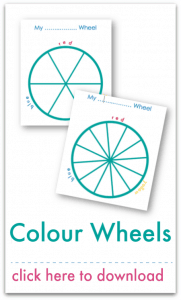Let’s learn about the painting technique pointillism and create art inspired by the famous French artist, Georges Seurat.
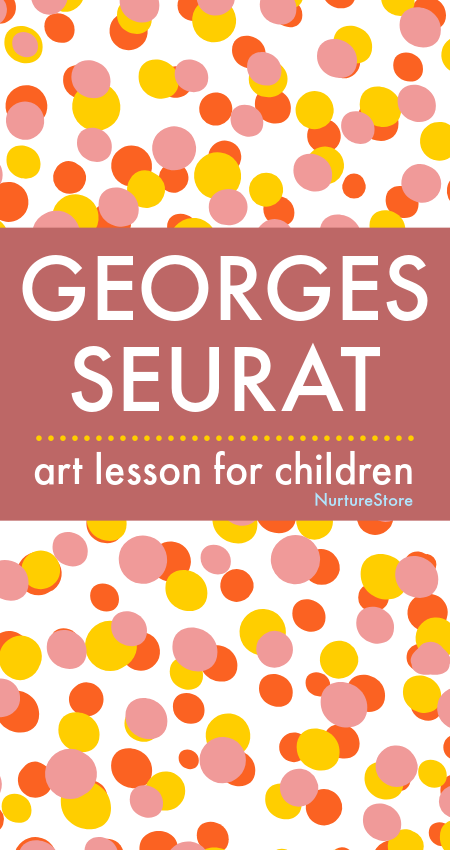
Seurat pointillism art lesson for children
Join this painting lesson to learn about the famous artist Georges Seurat, the painting technique of pointillism, and paint your own pointillism colour wheel.
This project is part of our art lessons about famous artists.
In this article you can:
:: learn about the famous French artist Georges Seurat
:: learn about the painting technique he invented, pointillism
:: see examples of his art
:: learn about colour theory
:: create a colour wheel using pointillism
:: find links to more famous art lessons
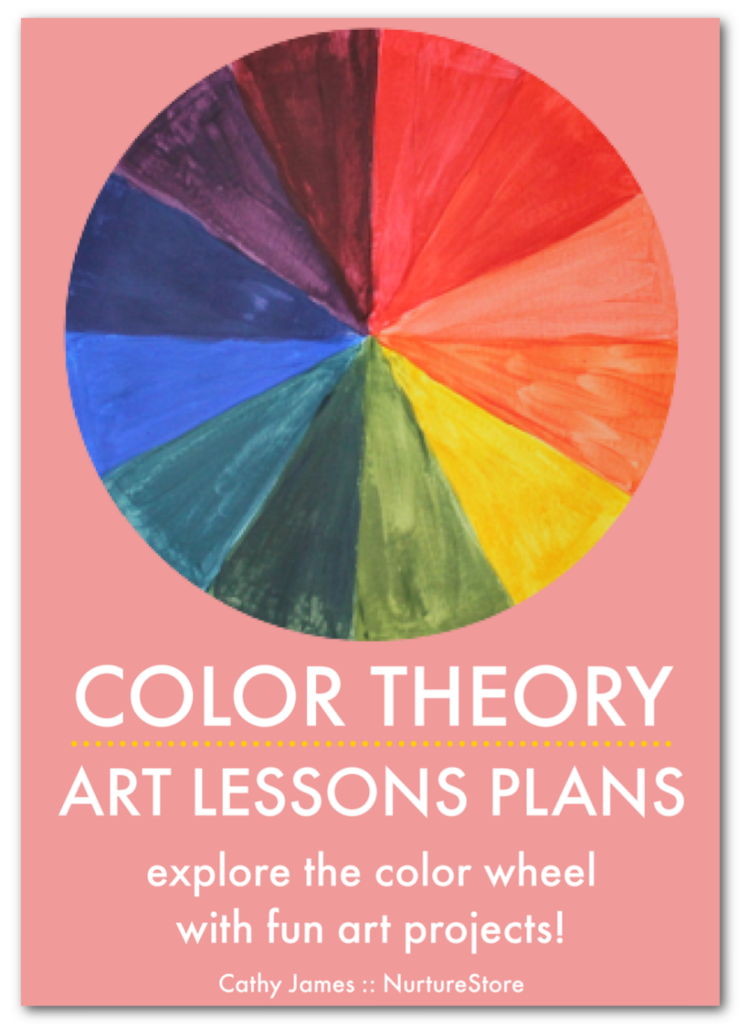
Get all our Color Theory art lesson plans
Use our ready-made Color Theory Art Lesson Plans to explore the color wheel with creative art projects. Our Color Theory curriculum gives you all the resources you need to learn about the color wheel and color theory and enjoy easy and fun art projects for every lesson.
The kit includes art history guides, famous artist profiles, and wider cross-curricular lessons in science, math, language arts and world culture, plus bonus printables and posters to make your teaching even easier.
See more details of our Color Theory curriculum and get your copy here.
Watch this art lesson about pointillism and secondary colors
Watch this video to see me teach this pointillism and secondary colors art lesson. Join in with this easy step-by-step art tutorial about color theory and create your own art project in the style of Georges Seurat.
Click play to watch the video or join NurtureStore’s art classes on YouTube! on NurtureStore’s YouTube channel. Don’t forget to subscribe!
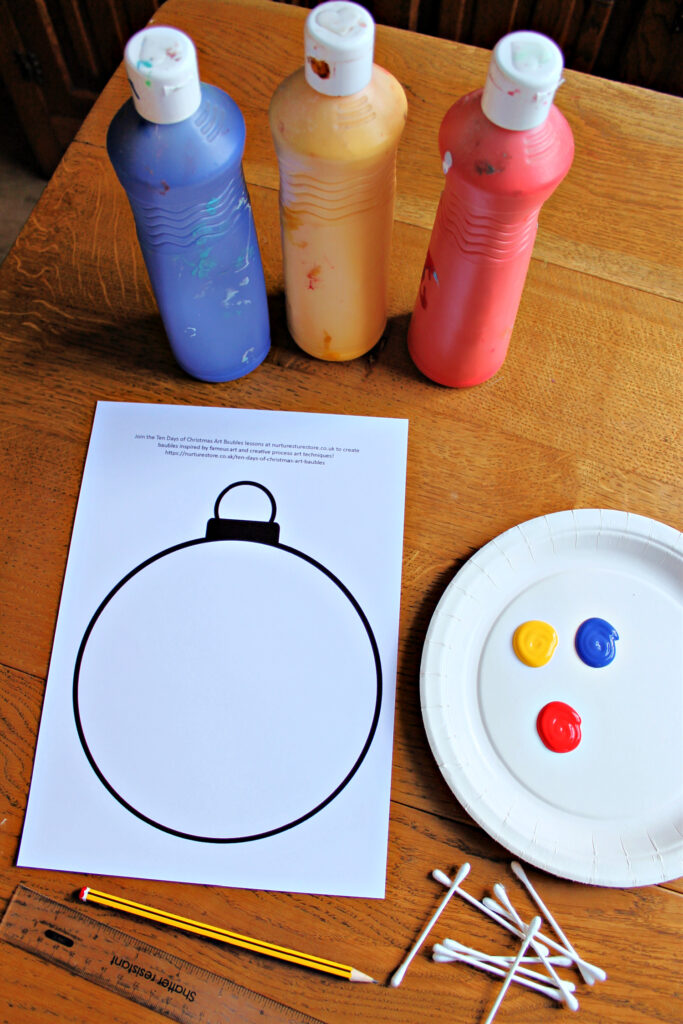
Materials needed
:: piece of paper, card or paper plate (You might like to use the colour wheel printable from NurtureStore’s Free Printables Library – see below for details)
:: red, yellow and blue paint
:: cotton buds
:: Christmas Bauble printable, if you are joining this lesson as part of NurtureStore’s Ten Days of Christmas Art Baubles
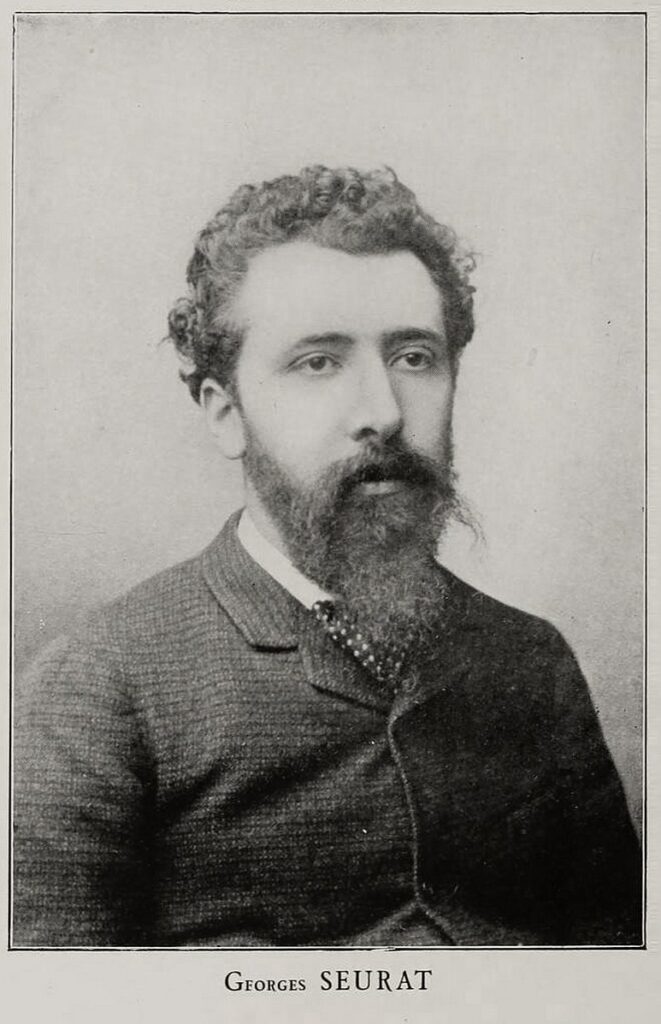
Meet famous artist Georges Seurat
Georges Seurat was a French painter. He was born in Paris in 1859 and died in 1891. His paintings featured scenes of life in Paris, including people picnicing in parks and swimming in the river Seine, and famous Paris landmarks such as the Eiffel Tower.
He is most famous for his use of the painting technique called pointillism.
Pointillism means painting with tiny dots in pure colours which visually blend together to create a new colour.
Most artists, if they want to paint with green, for example, would squeeze blue paint and yellow paint from their tubes and mix them together on their palette to make a green paint which then could then apply to their picture. Seurat would instead make dots of pure blue paint on his picture and then make dots of pure yellow paint in the same area of his picture. Your eye and brain ‘read’ these two colours together and see it only as green.
Seurat used colour theory in his paintings to combine colours to get the effect he wanted. He combined dots in pairs of the primary colours of red, yellow, and blue to make areas which looked like the secondary colours of green, purple and orange.
Red dots and yellow dots appear orange.
Blue dots and yellow dots appear green.
Blue dots and red dots appear purple.
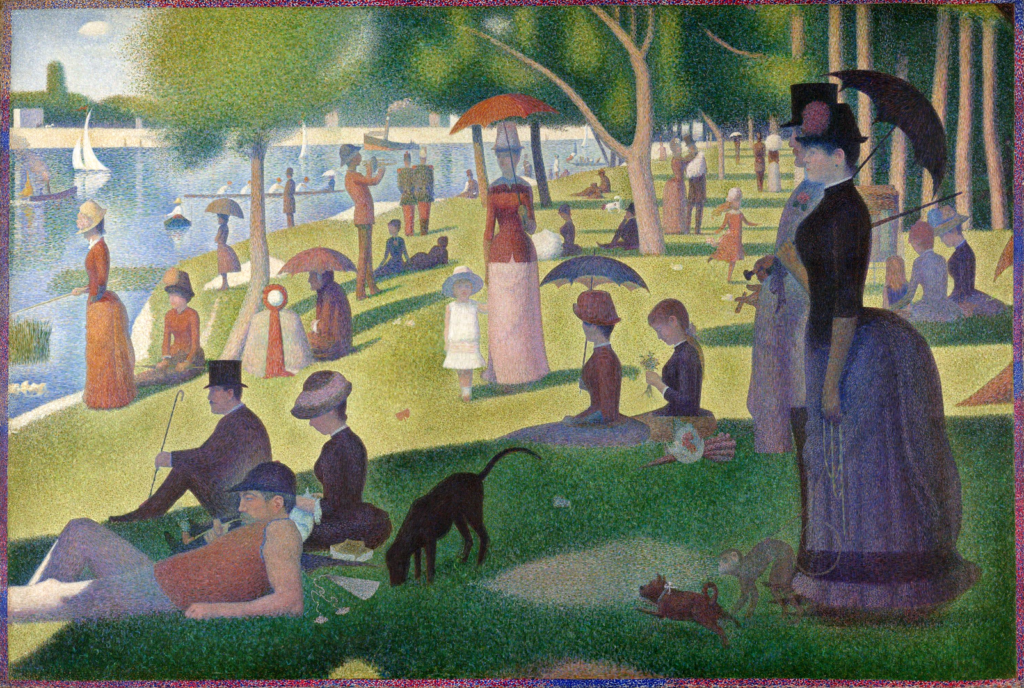
Examples of Georges Seurat’s art
Take a look at these examples of Georges Seurat’s art. As you look at them, answer these questions:
:: What can you see?
:: What colours can you see?
:: What does the painting make you think of?
The Seine Seen From La Grande Jatte, 1888
La Seine à la Grande-Jatte, 1888
How to make art in Georges Seurat style
Our art project inspired by Georges Seurat will be using the two main motifs of his style:
:: painting with dots of colour
:: mixing primary colour dots to create secondary colours

Using Pointillism to make a colour wheel
Let’s use the pointillism technique of combining colours to make a colour wheel.
You can use the colour wheel printable from NurtureStore’s Free Printables Library for this project. See below for details on how to print. Alternatively, draw a circle on to a piece of paper or card and mark it into it into six equal sectors with a ruler and pencil.
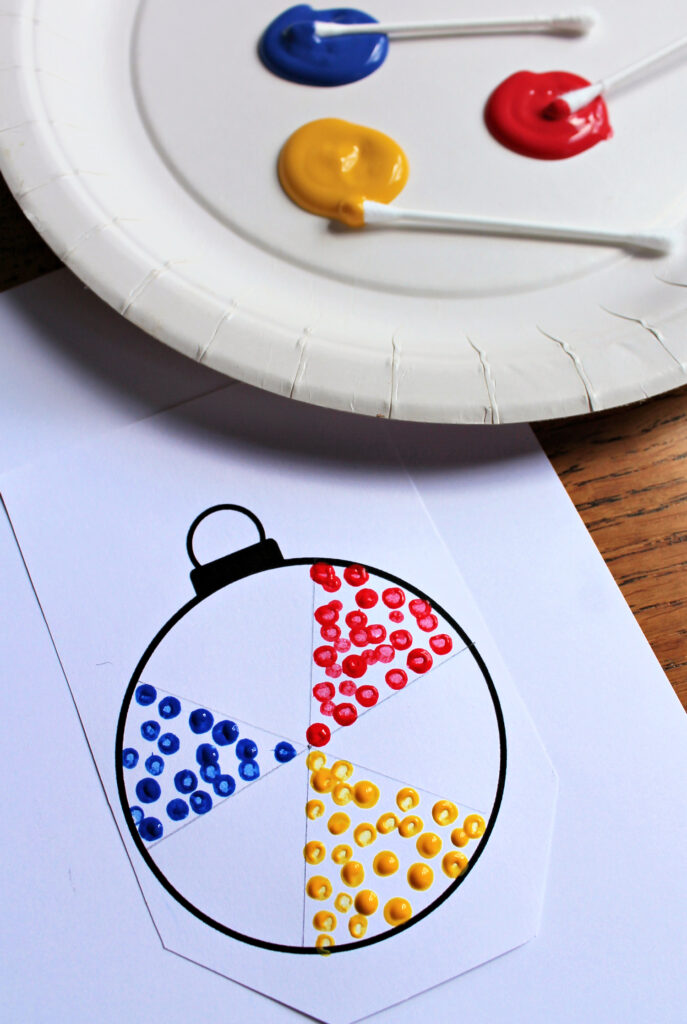
First, fill in three of the sectors (leaving every other sector blank for now) using primary coloured paint, using dots of paint. The primary colours are red, blue and yellow. (You can use our colour theory lesson for children to learn more about the colour wheel.) Dip a cotton bud into red paint and use if to fill one sector with red dots.
Then use another cotton bud to fill in a second sector with blue dots.
And use another cotton bud to fill in the third sector with yellow dots.
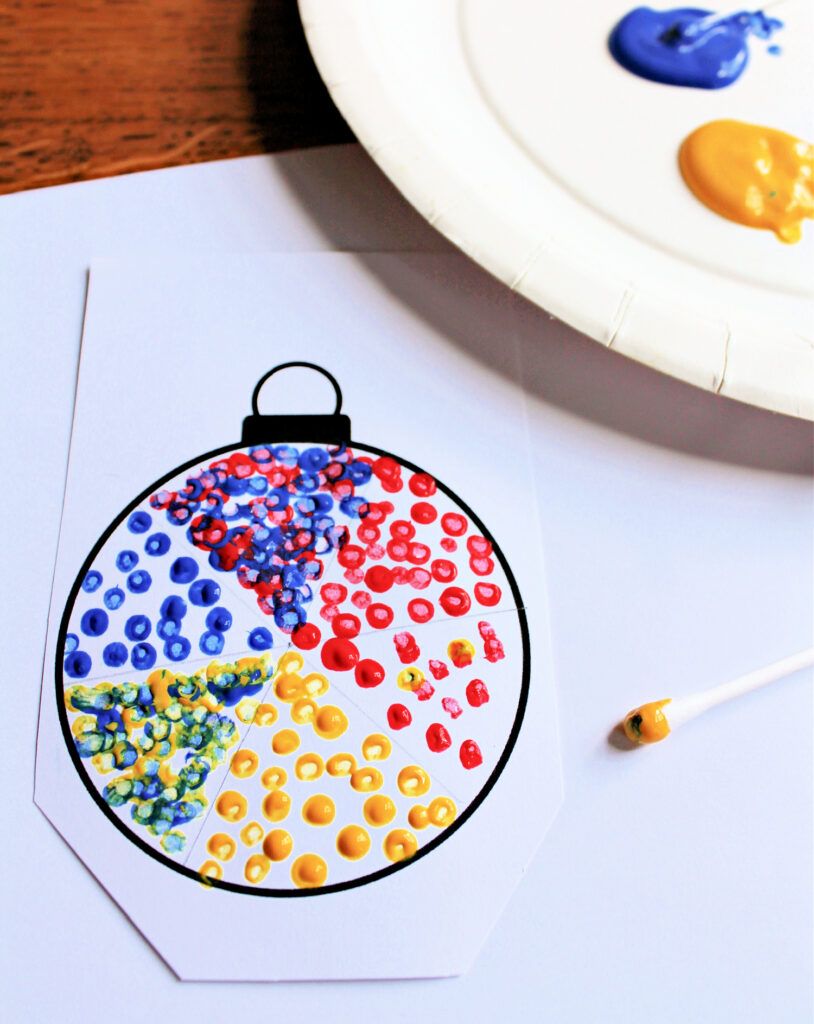
Next, combine two primary colours to give the impression of creating a new colour: a secondary colour. The secondary colours are orange, purple and green.
In the empty sector between the red and yellow sectors, use cotton buds to paint circles of both red and yellow. Stand back and notice how your brain sees this combination of two colours as orange.
Then, in the empty sector between the red and blue sectors, use cotton buds to paint circles of both red and blue. Stand back and notice how your brain sees this combination of two colours as purple.
Finally, in the empty sector between the blue and yellow sectors, use cotton buds to paint circles of both blue and yellow. Stand back and notice how your brain sees this combination of two colours as green.
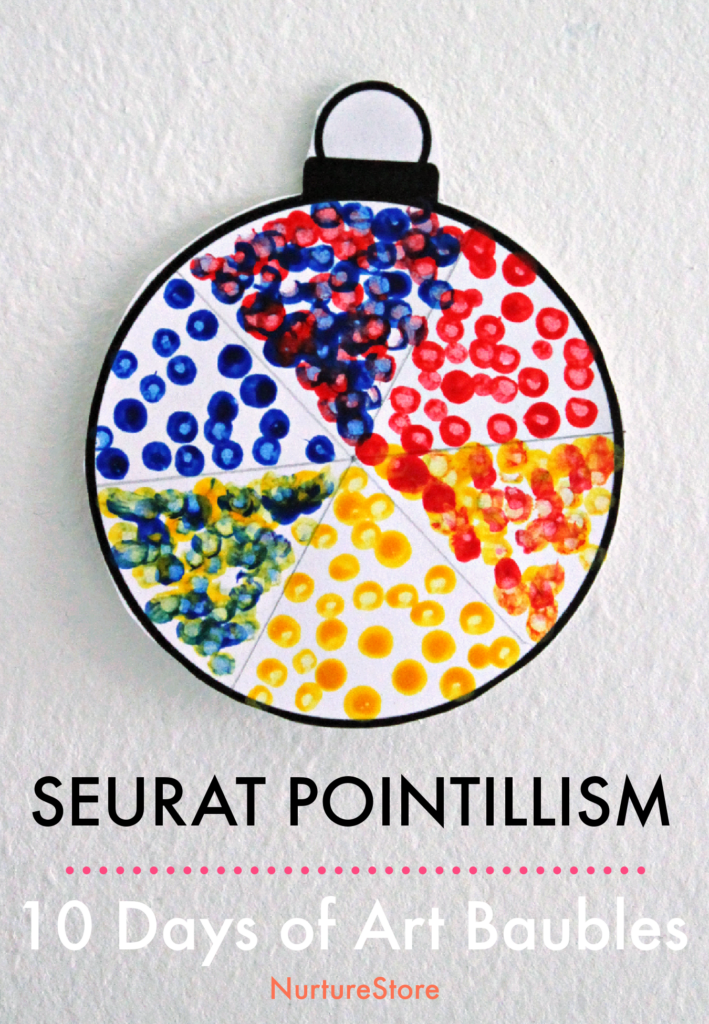
Pointillism Christmas bauble craft
Join our Ten Days of Christmas Art Baubles and create a Georges Seurat bauble!
Use our Christmas bauble printable in place of the colour wheel printable / sheet of card to create your art.
Use a pencil and ruler to divide your Christmas bauble into six even sectors.
Then use cotton buds dipped in red, yellow and blue paint to fill in each sector as described above.
Cut out the bauble from the printable and hang it up on the wall or Christmas tree as part of your Christmas art decorations.
>>> NurtureStore is hosting ten days of art lessons making Christmas art baubles, with ten different designs inspired by famous art and interesting process art techniques. We’re learning about Piet Mondrian, Wassily Kandinsky, Yayoi Kusama, Georges Seurat, and Alma Woodsey Thomas, plus exploring marbling, wax resist, squeegee art, printing and collage techniques.
See all the Ten Days of Christmas Art Baubles lessons and get your free bauble printables.


